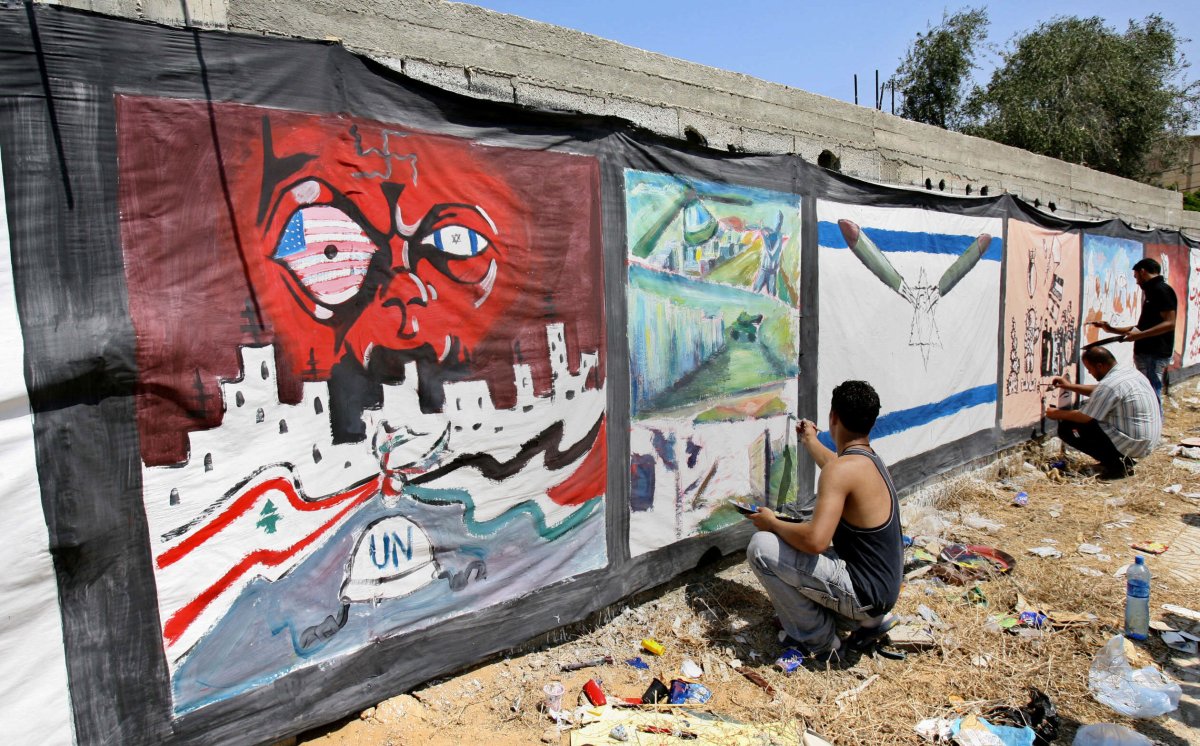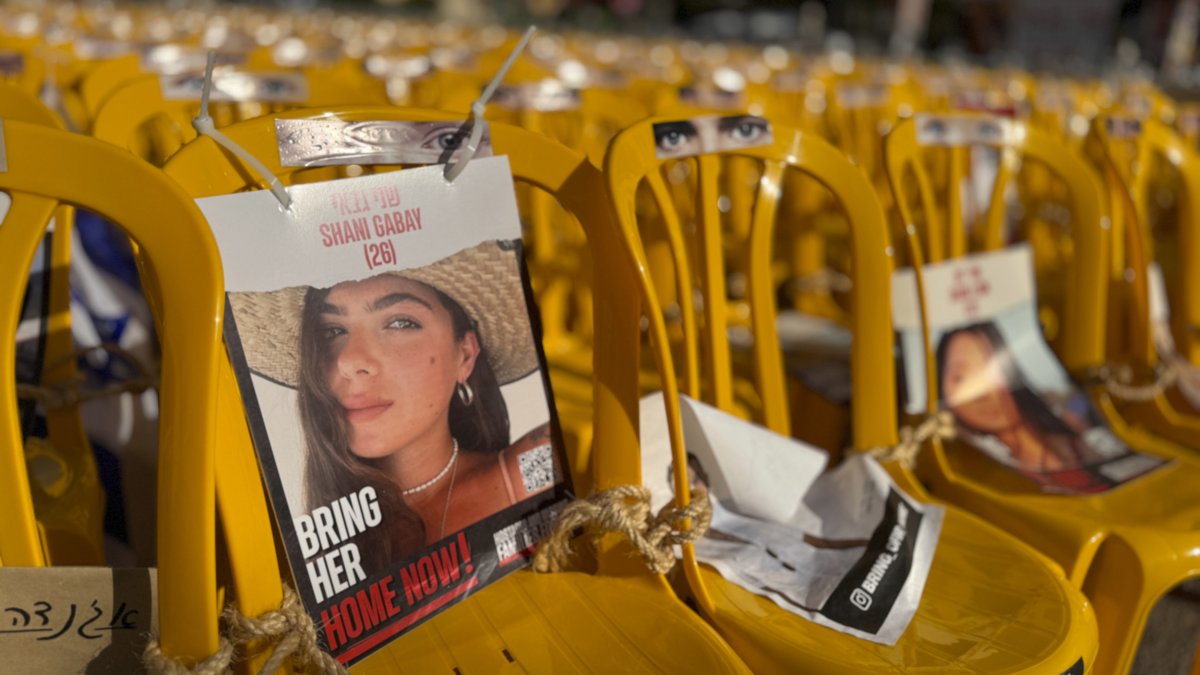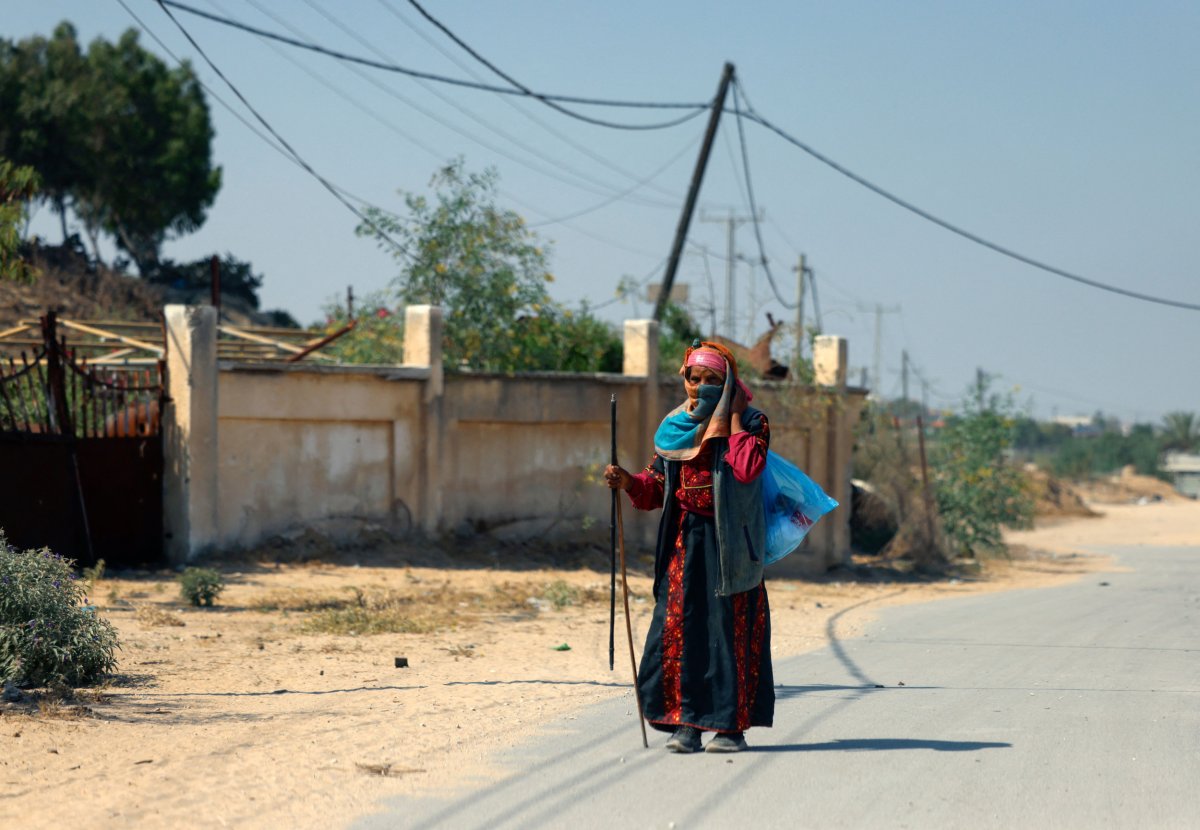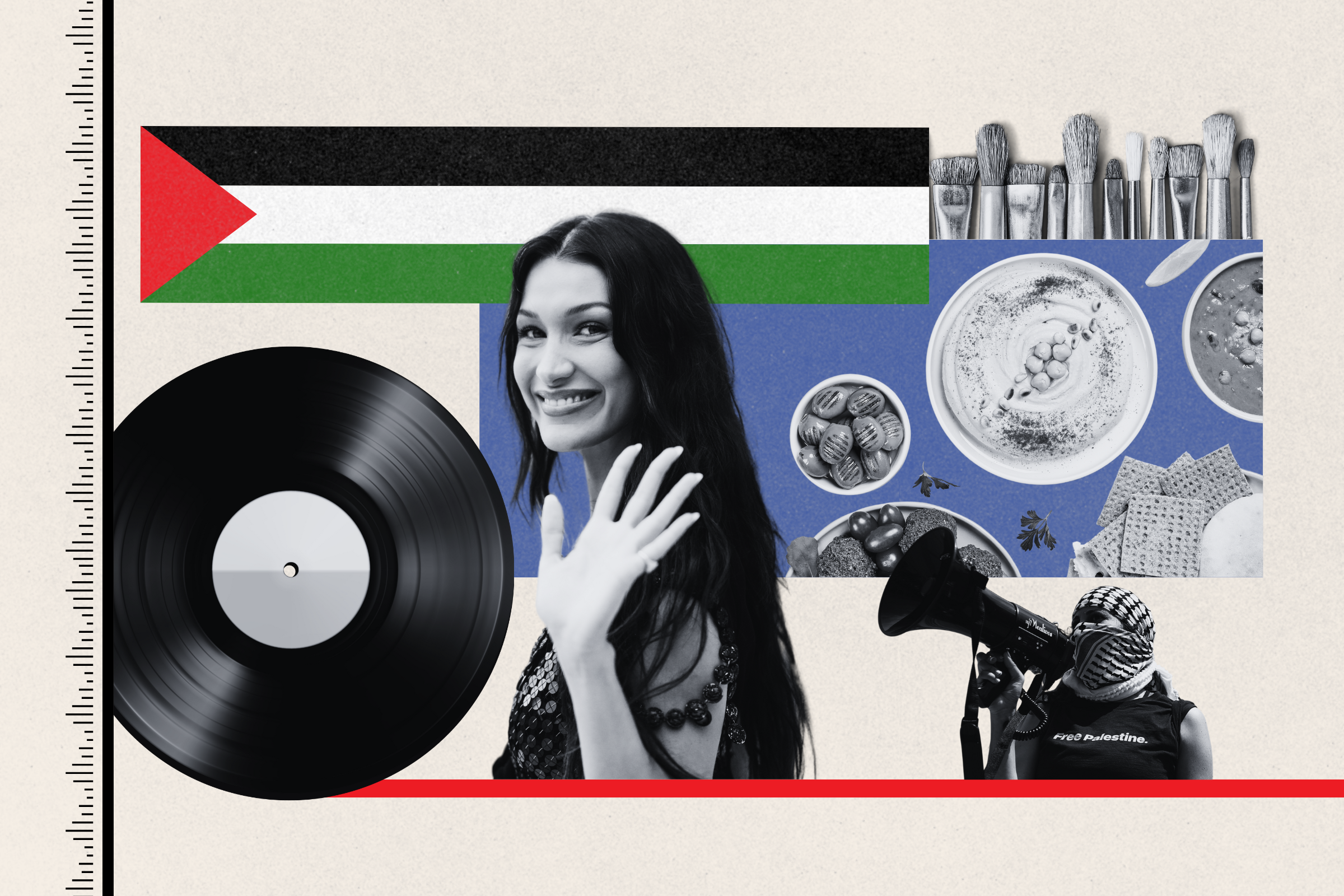As the war in Gaza continues, people across social media are mobilizing in a new form of peaceful protest: the celebration of Palestinian art and culture.
Through short films, painted art works, fundraising gigs and clothing, Palestinian art and culture is being kept alive online, and is becoming a way for people to celebrate Palestinian heritage and demonstrate their resistance to the conflict that has so far killed more than 40,000 people, according to Palestinian health authorities.
Bella Hadid is one figure who has become associated with this creative protest movement. The model, who’s father is Palestinian, has been actively participating in the creation of Palestinian art, alongside other Palestinian artists.
Arnold Jerocki/Getty Images Entertainment/GC Images
A recent example of this is the short film “Gaza Is Calling”, by the Canadian-Sudanese signer-songwriter Mustafa. The film features Hadid, MC Abul and Palestinian actress and film director Hiam Abbas. As Solomon Pace-McCarrick wrote for Dazed, “The video tells a visceral story of trauma arising from the ongoing violence in Palestine.”
Back in May, Hadid made headlines for wearing a dress in Cannes made from red and white keffiyeh fabric, using fashion to honor her Palestinian heritage.
Keffiyeh is a traditional Middle Eastern scarf, which is associated with the Palestinian people largely thanks to political leader Yasser Arafat, who adopted a black-and-white fishnet pattern keffiyeh as his iconic look in the 1960s. As fashion writer Hannah Jackson explained in British Vogue, “The scarf has evolved to become a symbol of solidarity with the Palestinian community.”

SAID KHATIB/Getty Images Entertainment/GC Images
It is not the only art form to have done so. Sliman Mansour is a prolific Palestinian artist, who’s work has come to symbolize the Palestinian national identity. Born in 1947, Mansour’s work explores a sense of loss in the Palestinian territories, especially after the occupation of the West Bank in 1967.
In an interview with Newsweek, Mansour spoke about his art, his career and the act of resistance. “As they say here in Palestine, existence is resistance,” he explained. “If you produce art, if you produce culture, it’s a form of resistance.”
He talked about the importance of Palestinian culture being kept alive on social media and other places online. “It’s an important issue, to make culture and art. It’s for the whole world to look at Palestinians as normal human beings. We’re not better than other people but we are not less.”
He told Newsweek that: “I think through our art, we can get that message to the whole world.”
“The aim of the culture and art in general is to rehumanize the Palestinian people,” Mansour said. “My aim I think in life is not to let the new generation forget and to keep Palestine in their minds and in their hearts.”
He said the conflict between Israel and Hamas was “not complicated. It’s very obvious, it’s very clear. The Israelis, they deny the existence of the Palestinian people.”
“I tell the story of the Palestinian people. I am a storyteller,” he said.
Newsweek reached out to the Israeli prime minister’s office for comment.
The current conflict between Israel and Hamas began on October 7 last year, when Hamas launched a widescale attack on Israel, in which around 1,200 people were killed and some 251 were taken hostage. Israel retaliated, with Prime Minister Benjamin Netanyahu vowing to eradicate Hamas.
Since the October 7 attack, Israeli artists have engaged in various forms of creative expression to remember the dead and process the trauma. This has included both professional and amateur artists creating works to document and respond to the atrocities, including murals, installations and documentary films.

Pavel Nemecek/CTK via AP Images
An organization to whom the importance of art in times of conflict is very clear, is the charity War Child. Founded in 1993 amid the Bosnian War, War Child has used art as a way to fundraise, raise awareness and explore therapy for victims of conflict.
Helen Pattison, War Child UK’s CEO told Newsweek that: “Art is hugely important in times of conflict. It is a meaningful form of expression.” Since its inception, War Child has worked with the likes of David Bowie, Oasis and Sinead O’Connor to help raise money for children affected by conflict.
Pattison explained that “In the horror of war, words can fail us. That is where art steps in to provide a sense of expression and meaning, where otherwise people may feel unable to speak or are lacking a voice.” War Child’s Head of Records, Rich Clark echoed that sentiment: “Music has always been a vehicle for protest. It has always been a vehicle to articulate and challenge conventions you don’t agree with.
One Palestinian art form which has been adopted online as a means of celebration is Tatreez, a form of traditional embroidery. Lina Barakawi uses Tatreez to explore her Palestinian heritage and culture. “The practice of Tatreez is my direct connection to Palestine,” she told Newsweek. “It’s greater than myself, yet it can also be seen as just me.”

Getty Images Entertainment/GC Images
Talking about the history of Tatreez, she said, “What makes Tatreez Palestinian is the history and inspiration behind the library of motifs that Palestinians have been stitching for over 1,000 years. This history and inspiration is directly rooted in the land of Palestine.”
Barakawi explained that this traditional embroidery is important in a time of conflict. It “symbolizes resilience and survival.”
“It is proof of our indigeneity to the land of Palestine and our existence.”
She described the art form as a testament to cultural continuity and identity, as well as a form of resistance. “By creating and wearing these traditional patterns, Palestinian’s assert their right to cultural heritage and resist erasure.”
The fashion brand, Trashy Clothing emerged with a similar mission: A ready-to-wear Palestinian fashion label which aims to address difficult political circumstances through conveying statements of joy and anti-colonialism through design statements. Trashy Clothing has had celebrities like former adult-film star Mia Khalifa, an outspoken supporter of the Palestinian people, model its clothing.
In an interview with Newsweek, the founders of Trashy Clothing explained that their design approach is inspired by Tatreez embroidery. “Our approach is by using fashion to preserve our culture while narrating our current experience.”
They explained that, “Our design process is deeply influenced by our background in film, making storytelling an integral part of our creative expression.”
“Each design choice – be it zippers, cuts, or prints – carries a narrative, contributing to the overarching story or world we are crafting with every collection,” they added.
Stories of Palestinian art and culture are proliferating online. Increasingly, social media platforms like TikTok and Instagram are becoming the go-to destination for young people as they looks to educate themselves on politics and culture. As Sabia Haque argued in an essay for intersectional feminist arts and culture site, Polyesterzine, “The introduction of the internet and social media pushed people to know more about the world around them, bypassing agendas set by traditional media sources and news outlets.”
Barakawi said that social media platforms have created a space online where Palestinian people and the diaspora can connect with each other. “The digital world has become the one place where all of these Palestinians can connect with each other, especially through the shared themes of art and culture.”
Do you have a story we should be covering? Do you have any questions about the Israel-Hamas conflict? Contact LiveNews@newsweek.com
